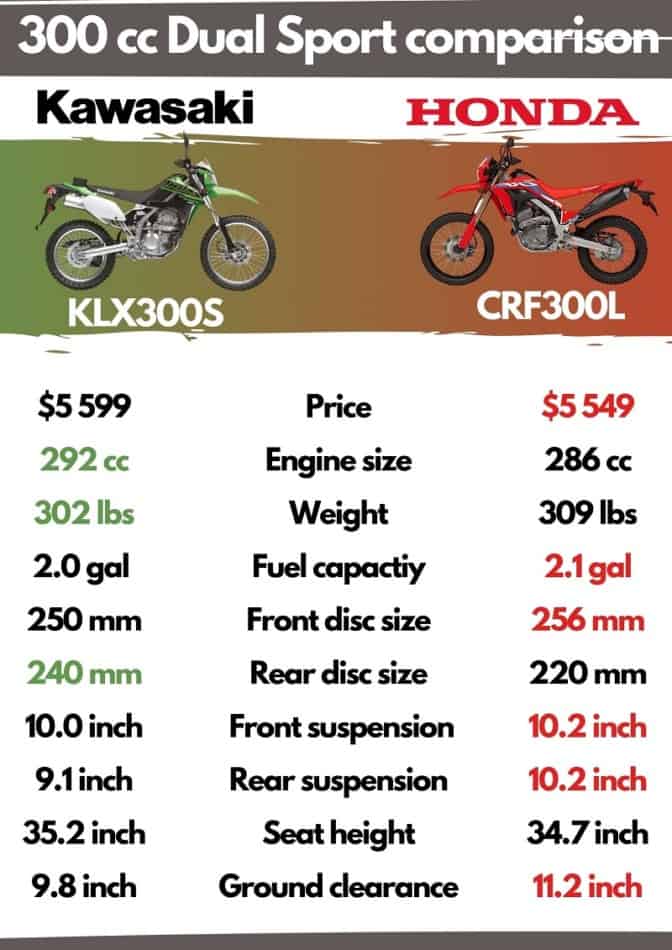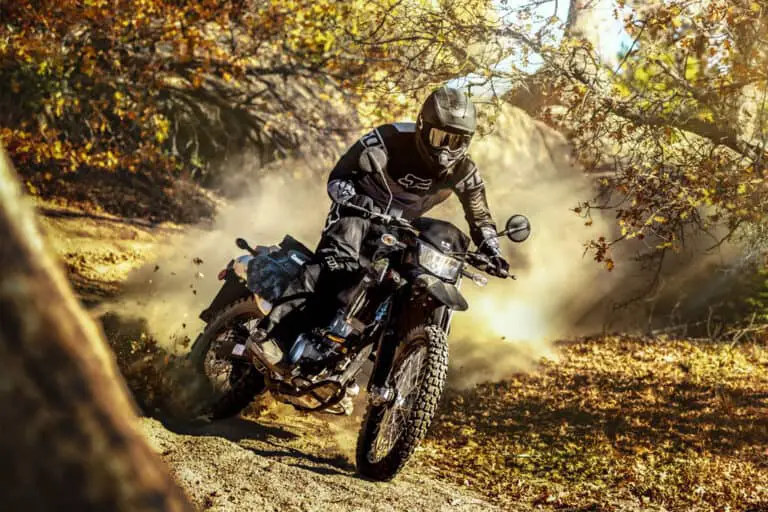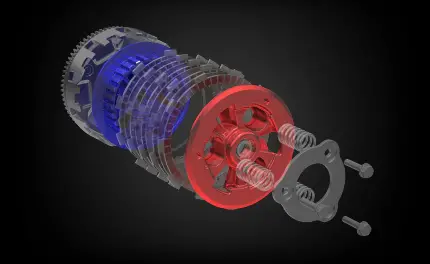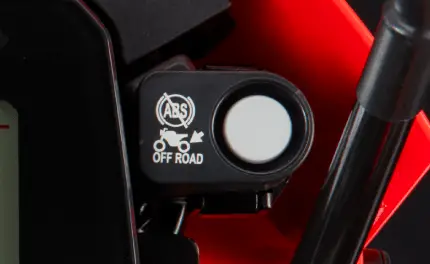Kawasaki and Honda have long battled it out in the small capacity dual sport motorcycle segment with the KLX250 and CRF250L. Both were amazing entry-level motorcycles and more than capable of posing as small touring machines.
Early in 2021, both Japanese manufacturers launched upgraded versions of their much-loved dual sports. Looking at the specifications, it is almost as if they worked together (or at least spied on each other) during the development. Both are now 300 cc (or close to it) and they both cost the same.
The decision of whether to buy the Kawasaki KLX300S or the Honda CRF300L will not be made on paper. But having a look at the specifications before taking the bikes for a test ride, may give the prospective buyer some insights on what to look out for on each model.
The table below outlines the major specifications of both models, with the ‘winner’ in each category in the color of the winning bike (green for the Kawa, and red for the Honda).

While the Honda wins more of the categories on paper, it has to be disclosed that the margins are very slim (usually bot more than 2%). The only two specs where the Honda wins by more than 10% is the rear suspension travel (12%) and the ground clearance (14%).
The specifications is one thing, but what about the other features and upgrades. I’ve read through the press releases of both bikes to find unique features that the one bike has and the other does not. Here’s what I’ve found:
KLX300S has Adjustable Suspension
Unlike the Honda, the Kawa KLX300S has adjustable suspension in the front and the rear. The 43 mm inverted cartridge-style front fork has compression damping adjustability, while the Uni-Trak® rear suspension has a gas-charged shock with preload and rebound damping adjustments.

On an entry-level bike like these two models, this is a very welcome feature and possible edges the KLX300 a little ahead of the CRF300L off road. On the Honda, larger riders or those planning to ride aggressively in the dirt may have to upgrade the suspension at additional cost.
Honda CRF300L has a Slipper Clutch
The 2021 Honda CRF300L and Rally model now has a slipper clutch, a feature usually only seen on much more expensive adventure bikes. Honda claims a 20% reduction in operating load thanks to the slipper clutch.

The slipper clutch will also prevent the rear wheel from locking up and hopping when downshifting too aggressively with less stress in the drivetrain components like the sprocket and chain.
Honda CRF300L has ABS Brakes
Neither the Kawasaki homepage not the press release of the KLX300 makes mention of ABS brakes. This is strange, since Euro 5 requires it, so I may have misread it. The Honda CRF300L, on the other hand, definitely has ABS as an optional ($300) extra.
There are ABS sensors on both front and rear wheels, with the rear ABS system being cancellable with the push of a button. I am so relieved that Honda added the ability to switch off ABS in the rear to ensure the rear wheel can still be locked at will when riding in the dirt.

Conclusion: KLX300S or CRF300L?
When it comes to motorcycle comparisons there is nothing more annoying than an inconclusive result. On paper, the Honda wins thanks to more points on paper (for the specifications) and two unique features (compared to only one on the KLX).
In real life, though, the winner will only be determined to how each one makes you feel. So go out there and test ride the hell out of each one and make your choice.
Happy riding!
